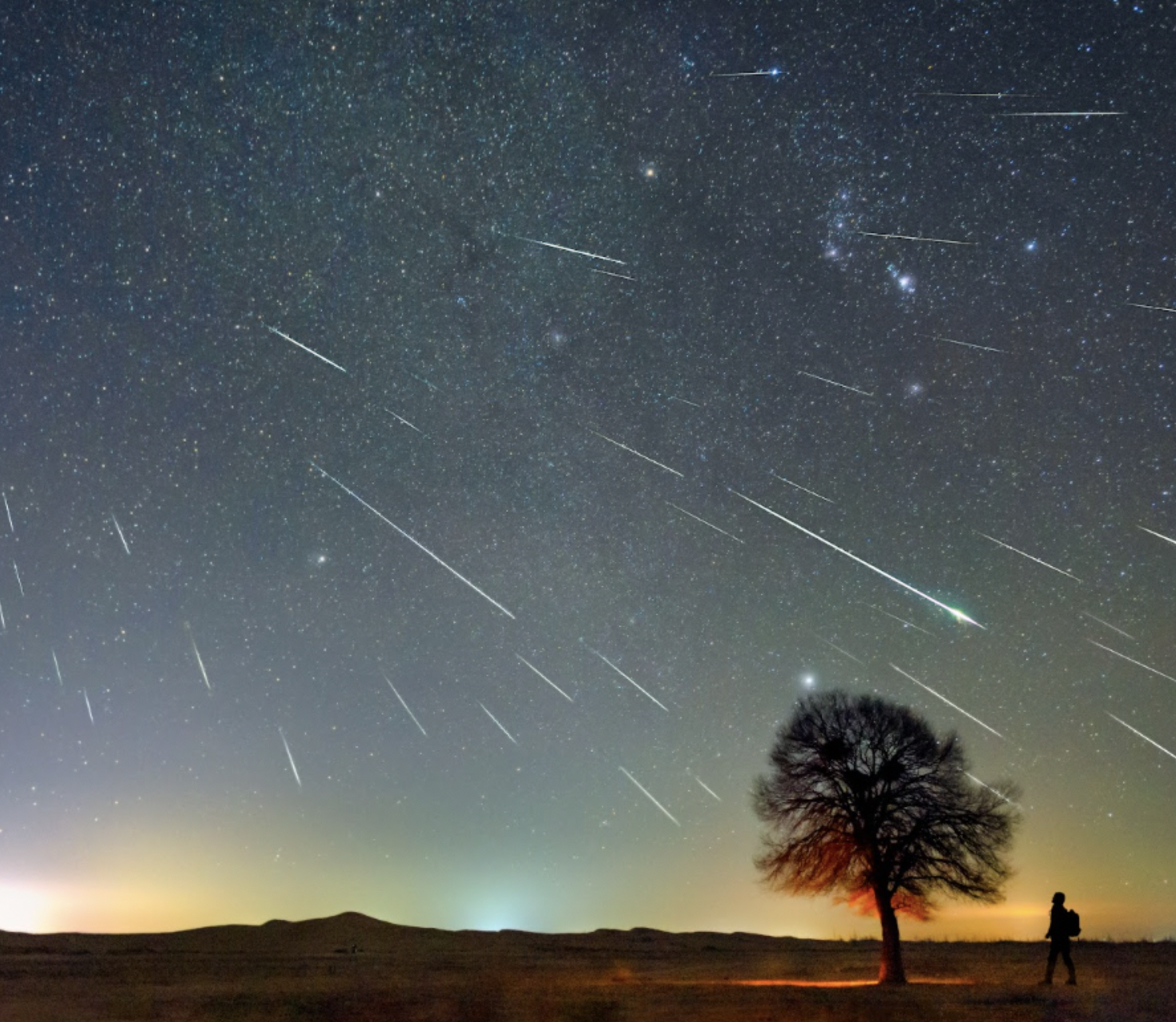Cosmic Chronicles

Category
InfosShooting stars, known scientifically as meteors, are luminous streaks observed in the night sky when extraterrestrial debris enters Earth’s atmosphere. These meteors have captivated humanity for centuries, inspiring both scientific and cultural myths.
What Are Shooting Stars?
Despite their name, shooting stars are not actual stars. They are meteoroids — small fragments of asteroids or comets — that, upon entering Earth’s atmosphere at high velocities, ignite due to frictional heating, producing visible light. This phenomenon is termed a meteor. If any portion of the meteoroid withstands atmospheric entry and impacts Earth’s surface, it is then classified as a meteorite.
When and Where Do They Occur?
Meteors can be observed at any time and place, but their frequency increases during specific periods known as meteor showers. These events occur when Earth traverses streams of debris left by comets or asteroids. Meteor showers are typically named after the constellation from which they appear to radiate. For instance, the Perseids, peaking around August 12, seem to emanate from the constellation Perseus.
Why Do Shooting Stars Occur?
The occurrence of shooting stars is primarily due to Earth’s interaction with cosmic debris. As our planet orbits the Sun, it encounters particles from comets and asteroids. When these particles, often no larger than grains of sand, enter Earth’s atmosphere at speeds ranging from 11 to 72 kilometers per second, they combust due to atmospheric friction, resulting in the bright trails we observe.
Who Studies Shooting Stars?
The study of meteors falls under the domain of meteoritics, a branch of planetary science. Researchers and astronomers analyze meteors to gain insights into the composition of the solar system and the history of celestial bodies. Organizations like the American Meteor Society (AMS) collect observational data from the public to support scientific research.
Upcoming observation opportunities
- Lyrids (April 2025): Active from April 14 to 30, the Lyrids peaked on April 21-22, 2025. Observers reported an average of 18 meteors per hour.
- Perseids (August 2025): One of the most popular meteor showers, the Perseids peaked on August 12-13, 2025. Despite a bright moon, observers noted up to 50 meteors per hour.
For enthusiasts in Barcelona, the upcoming Lyrids meteor shower, active from April 14 to 30, 2025, will peak on the night of April 21-22. With the Moon at 40% fullness, viewing conditions are favorable. To observe, find a dark location away from city lights, allow your eyes to adjust to the darkness, and look towards the constellation Lyra after midnight.
Alyona PARAISO 2-2


